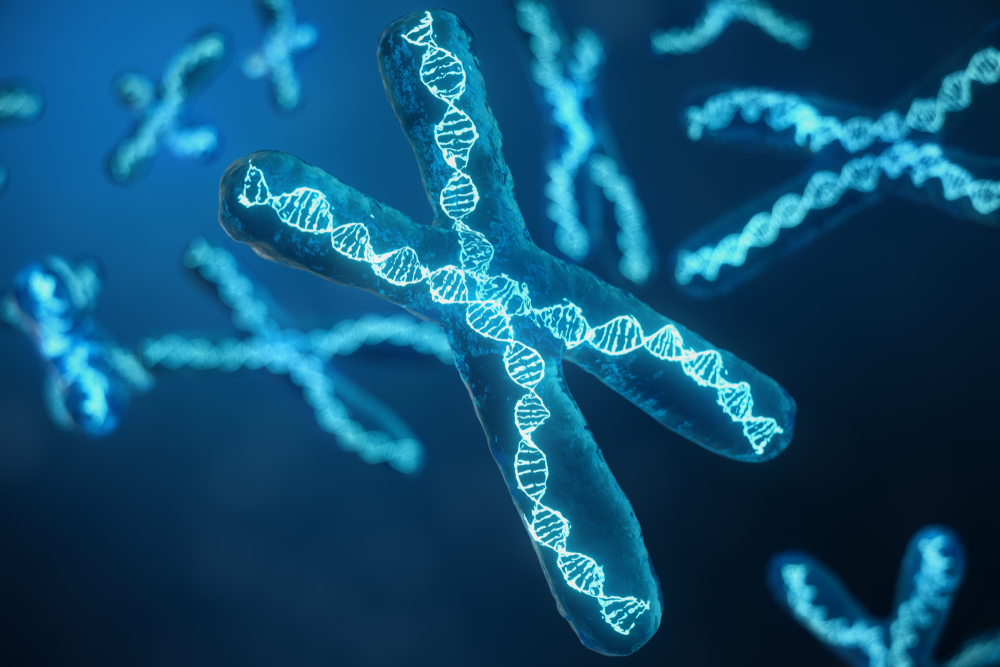
Inherited haemochromatosis is a disorder that causes your body to absorb too much iron from your diet. It is due to having genetic alterations inherited from your father and mother. The human body tightly controls iron levels by taking in only what is needed. It does not have a way of getting rid of excess iron. In haemochromatosis, the genes that control iron absorption are not working properly and the body absorbs too much iron. It stores it in organs and tissues in a condition known as iron overload. If left untreated iron can progressively build up and cause severe organ damage.
If you have symptoms that suggest you have haemochromatosis your doctor will usually request a Full Blood Count (FBC) and an iron studies panel of tests. If these results indicate haemochromatosis, your doctor may next order an HFE gene test which is the only definitive way to make a diagnosis.
What is being tested?
The HFE gene contains the DNA code to produce a protein that is involved in the regulation of iron uptake by cells – mainly liver and intestinal cells. Some mutations in this gene affect its ability to regulate iron uptake and this leads to iron overload in the body causing hemochromatosis.
How is it used?
The HFE mutation test is primarily used to detect a mutation called C282Y on the HFE gene. The HFE gene is on chromosome 6. We inherit chromosomes and genes from our parents – including the HFE gene. Each cell in the human body (except sperm and eggs) has 46 chromosomes (23 inherited from the mother and 23 from the father). Genes on these chromosomes form the body's blueprint for producing proteins that control body functions. If a person has C282Y mutations in both copies of the HFE gene - one on each of the pairs of chromosomes, they have a high risk of developing haemochromatosis. Two other mutations H63D and S65C are associated with a more moderate risk of developing haemochromatosis. One or both of these mutations may be tested at the same time.
Most cases of haemochromatosis are found in people who have two copies of the C282Y mutation, one on each of the pair of chromosomes. Some cases of haemochromatosis occur in people who have one copy of C282Y and one of either H63D or S65Y. The technical name for this is that they are compound heterozygotes. People who have two copies of the H63D mutation may have a very slightly increased risk of developing haemochromatosis while people who have only one copy of any of these mutations and one normal gene are not at increased risk.
When is it requested?
HFE mutation testing is usually ordered to detect haemochromatosis early before the associated iron overload causes permanent tissue damage. Typical patients will be those with repeatedly elevated serum transferrin saturation or serum ferritin. First-degree relatives of people with known haemochromatosis or known high-risk genotype such as C282Y homozygotes or compound heterozygotes such as C282Y/H63D or C282Y/S65C should also be tested even if they have not yet developed abnormalities in their iron related blood tests.
If the person is found to have a high-risk genotype they can be closely monitored over time and started on treatment early. Treatment is to have blood regularly removed because this removes iron from the body and prevents haemochromatosis developing. If they are eligible, they can become regular blood donors; if they are not eligible they they must still have blood withdrawn at regular intervals.
What does the result mean?
There are several possible test results:
Is there anything else I should know?
More than 40 mutations in the HFE gene have been described but most of these are very rare and the clinical significance of many of them is not yet known. Only C282Y and H63D mutations are commonly tested for.
Common questions
It is not offered in every laboratory. In most cases, your blood will be sent to a specialist reference laboratory for testing.
No, you inherit a copy of the gene from each of your parents and they will not change over time.
Even when two people have the same HFE mutations, the effects on the body are often different. Many things can affect iron metabolism especially gender (women are at less risk than men), alcohol intake and other factors.
More information
What is Pathology Tests Explained?
Pathology Tests Explained (PTEx) is a not-for profit group managed by a consortium of Australasian medical and scientific organisations.
With up-to-date, evidence-based information about pathology tests it is a leading trusted source for consumers.
Information is prepared and reviewed by practising pathologists and scientists and is entirely free of any commercial influence.